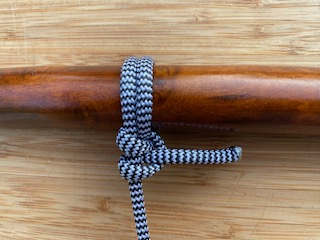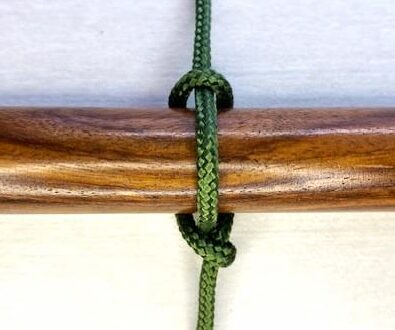
The Fisherman’s Bend : A Strong Knot That Will Not Jam nor Slip Under Tension
The Fisherman’s Bend, also known as the Anchor Bend, is a strong and simple knot that is designed to be secure and not jam or slip under strain.
The fisherman’s bend is often used to attach a rope to a ring, hook, anchor, or other object, as you mentioned. This knot is a reliable and secure choice for tying a rope to a ring or a hook.
It’s also known for its strength and security under load, it’s easy to tie and it’s relatively easy to untie even after being loaded. It’s a popular choice for boating, fishing, and other outdoor activities.
Tying Guide
- Overlap the Ropes: Lay the ends of the two ropes parallel to each other, overlapping by at least 12 inches (30 cm).
- Create a Loop: Take one end and make a loop by bringing it back over itself to form a U-shaped loop. The free end should be left hanging after creating this loop.
- Wrap the Other Rope: Take the second rope and pass it through the loop created by the first rope. Then, wrap it around both parts of the looped rope, following the initial path of the first rope.
- Thread Through the Loops: Pass the second rope under itself and then through the same loop again, creating two turns around both parts of the first rope’s loop.
- Secure and Tighten: Pull both ends of the second rope and the initial free end of the first rope to tighten the knot. Ensure the wraps cinch down securely and snugly against each other.
- Adjust and Trim: Adjust the knot to ensure it’s tight and secure. Trim the excess ends close to the knot, leaving a small tail to prevent unraveling.
Tips:
- Equal Tension: When tightening the Fisherman’s Bend, apply equal tension to both ropes to ensure the wraps are snug and secure.
- Check Security: Always test the knot’s strength by gently tugging on both ropes after tying to confirm it’s properly secured.
- Tight Wraps: Ensure the wraps around the standing part of the first rope are tight and evenly spaced to create a strong and reliable knot.
The Fisherman’s Bend is particularly useful in situations where two ropes of different diameters need to be securely joined and suitable for securing a rope to a ring or post.
It’s a dependable knot for various applications, including climbing, camping and sailing: also used for anchoring, mooring and in rescue work.





